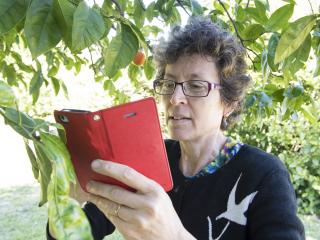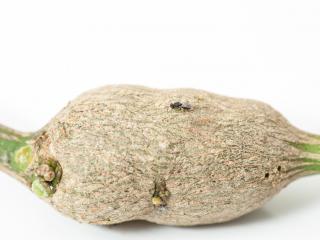Home gardeners have been urged to check their citrus trees for unusual lumps and bumps to survey for citrus gall wasp, as part of their contribution to the Department of Agriculture and Food’s annual Biosecurity Blitz.
During last year’s Biosecurity Blitz, an alert gardener reported several of the wasp’s galls, or nests, on her citrus trees to the department, helping to protect citrus Western Australian growers from a potential outbreak of the pest.
The two week Biosecurity Blitz from 18-30 September provides a unique opportunity for the broader community to assist in pest surveillance to help protect the State’s valuable agriculture and food sector and market access.
Senior development officer Rosalie McCauley said the citrus gall wasp discovery was a powerful example of how biosecurity was a shared responsibility.
“Citrus gall wasp is a native Australian wasp that occurs on the east coast but is considered an exotic pest to Western Australia,” Dr McCauley said.
“Although the pest can currently be found in the Perth metropolitan area, it has yet to establish in WA’s commercial orchards.
“Community surveillance for this potentially damaging pest is essential to protect the citrus industry from significant fruit losses and added control costs.”
Citrus galls, or nests, appear at this time of the year as woody bulges, about one to two centimetres long, on tree stems that are one or two years old. The galls contain hundreds of larvae, which emerge as tiny black wasps from mid-September to early November.
Any signs of citrus gall wasp – or any other pest, disease or weed – can be reported to the department via its free MyPestGuide Reporter app.
The department recently confirmed a report of the wasp, found in a lime tree, made via the app by a householder in Perth’s northern suburbs.
“The MyPestGuide Reporter app is a tool that allows people to take up to four photographs of the pest or symptoms and then sends the report directly to the department for expert identification and, if it is confirmed, to map how far it has spread,” Dr McCauley said.
“Early detection and identification are crucial to an effective biosecurity response, so community surveillance and notification is crucial.
“Control measures for citrus gall wasp are quite simple if the galls are found in time.”
For more information about Biosecurity Blitz or Citrus gall wasp visit agric.wa.gov.au
Reports of citrus gall wasp or any other biosecurity risk can also be reported to the department’s Pest and Disease Information Service on freecall 1800 881 084 or email info@agric.wa.gov.au
The Biosecurity Blitz is an activity of the department’s Boosting Biosecurity Defences project made possible by a $20 million investment by the State Government’s Royalties for Regions program.


Media contact: Jodie Thomson/Dionne Tindale, media liaison +61 (0)8 9368 3937
